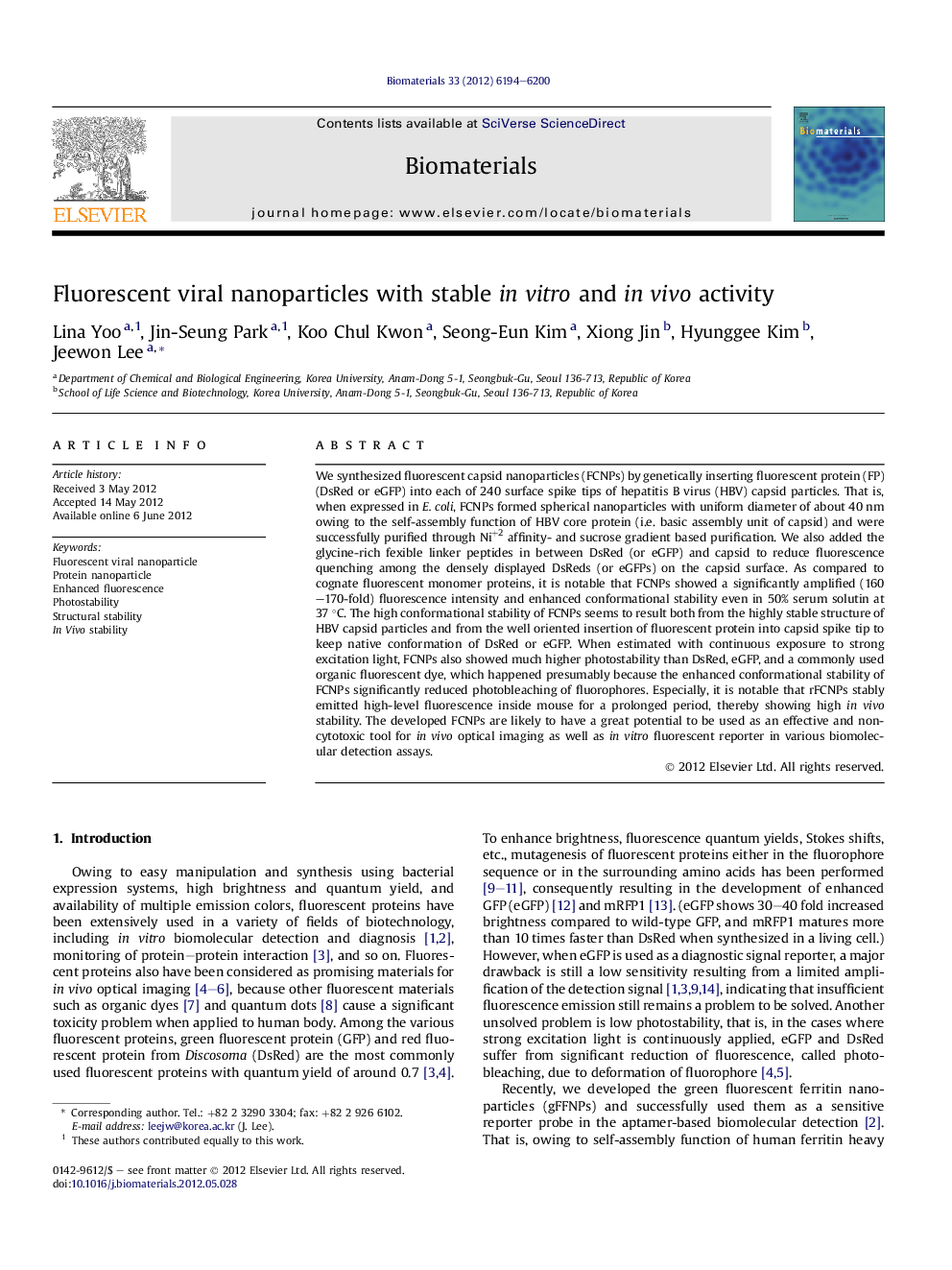| کد مقاله | کد نشریه | سال انتشار | مقاله انگلیسی | نسخه تمام متن |
|---|---|---|---|---|
| 6719 | 513 | 2012 | 7 صفحه PDF | دانلود رایگان |

We synthesized fluorescent capsid nanoparticles (FCNPs) by genetically inserting fluorescent protein (FP) (DsRed or eGFP) into each of 240 surface spike tips of hepatitis B virus (HBV) capsid particles. That is, when expressed in E. coli, FCNPs formed spherical nanoparticles with uniform diameter of about 40 nm owing to the self-assembly function of HBV core protein (i.e. basic assembly unit of capsid) and were successfully purified through Ni+2 affinity- and sucrose gradient based purification. We also added the glycine-rich fexible linker peptides in between DsRed (or eGFP) and capsid to reduce fluorescence quenching among the densely displayed DsReds (or eGFPs) on the capsid surface. As compared to cognate fluorescent monomer proteins, it is notable that FCNPs showed a significantly amplified (160–170-fold) fluorescence intensity and enhanced conformational stability even in 50% serum solutin at 37 °C. The high conformational stability of FCNPs seems to result both from the highly stable structure of HBV capsid particles and from the well oriented insertion of fluorescent protein into capsid spike tip to keep native conformation of DsRed or eGFP. When estimated with continuous exposure to strong excitation light, FCNPs also showed much higher photostability than DsRed, eGFP, and a commonly used organic fluorescent dye, which happened presumably because the enhanced conformational stability of FCNPs significantly reduced photobleaching of fluorophores. Especially, it is notable that rFCNPs stably emitted high-level fluorescence inside mouse for a prolonged period, thereby showing high in vivo stability. The developed FCNPs are likely to have a great potential to be used as an effective and non-cytotoxic tool for in vivo optical imaging as well as in vitro fluorescent reporter in various biomolecular detection assays.
Journal: Biomaterials - Volume 33, Issue 26, September 2012, Pages 6194–6200